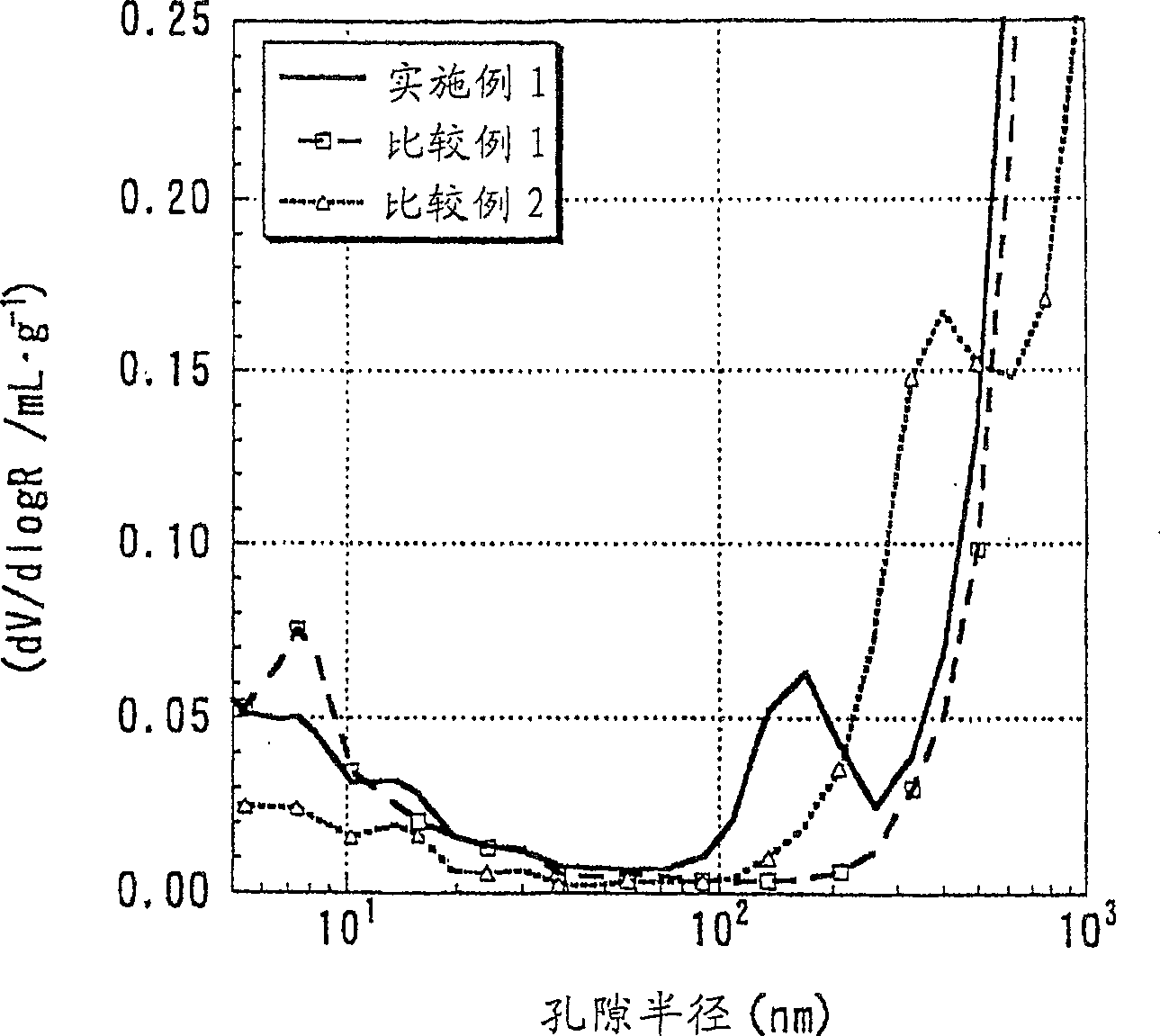Lithium composite oxide particle for positive electrode material of lithium secondary battery, and lithium secondary battery positive electrode and lithium secondary battery using the same
A composite oxide, lithium secondary battery technology, applied in secondary batteries, battery electrodes, active material electrodes, etc., can solve the problems of limiting battery capacity, reducing the filling efficiency of positive active materials, etc., to achieve excellent coating, excellent Low temperature load characteristics, effect of improving low temperature load characteristics
- Summary
- Abstract
- Description
- Claims
- Application Information
AI Technical Summary
Problems solved by technology
Method used
Image
Examples
Embodiment 1
[0214] Weigh NiO, Co(OH) as nickel, cobalt and manganese raw materials respectively 2 and Mn 3 o 4 , so that the molar ratio of Ni:Co:Mn is 0.33:0.33:0.33. Pure water was added to the weighed raw materials to prepare a slurry. Then, under stirring, the slurry was wet pulverized by a circulating medium agitation type wet bead mill until the average particle diameter of the solid matter in the slurry was 0.3 μm.
[0215] The slurry was then spray-dried in a spray dryer to form roughly spherical granulated particles with a diameter of about 5 μm and composed of nickel, cobalt and manganese raw materials. LiOH powder having a median particle diameter of 3 μm was added to the granulated particles thus obtained so that the molar ratio of Li was 1.05 relative to the total moles of Ni, Co and Mn, followed by mixing with a high-speed stirrer. Thereby, a mixture powder of granulated particles of nickel, cobalt and manganese raw materials and lithium raw material can be obtained.
...
Embodiment 2
[0218] Weigh NiO, Co(OH) as nickel, cobalt, manganese and lithium raw materials respectively 2 and Mn 3 o 4 and LiOH·H 2 O, so that the molar ratio of Ni:Co:Mn:Li is 0.33:0.33:0.33:0.05. Pure water was added to the weighed raw materials to prepare a slurry. Then, the slurry was wet pulverized with a circulating medium agitation type wet bead mill under stirring until the average particle diameter of the solid matter was 0.20 μm.
[0219] The slurry was then spray dried with a spray dryer to form roughly spherical granulated particles with a diameter of about 6 μm and composed of nickel, cobalt, manganese and lithium raw materials. LiOH powder having a median diameter of 3 μm was added to the granulated particles thus obtained so that the molar ratio of Li was 1.00 relative to the total moles of Ni, Co and Mn, followed by mixing with a high-speed stirrer. Thereby, a mixture powder of granulated particles made of Ni, Co, Mn and lithium raw material and lithium raw material ...
Embodiment 3
[0221] Except for using CoOOH as the cobalt raw material, operations were carried out in the same manner as in Example 2, thereby obtaining lithium composite oxide particles (hereinafter referred to as "lithium composite oxide particles of Example 3").
PUM
| Property | Measurement | Unit |
|---|---|---|
| radius | aaaaa | aaaaa |
| diameter | aaaaa | aaaaa |
| surface tension | aaaaa | aaaaa |
Abstract
Description
Claims
Application Information
 Login to View More
Login to View More - R&D
- Intellectual Property
- Life Sciences
- Materials
- Tech Scout
- Unparalleled Data Quality
- Higher Quality Content
- 60% Fewer Hallucinations
Browse by: Latest US Patents, China's latest patents, Technical Efficacy Thesaurus, Application Domain, Technology Topic, Popular Technical Reports.
© 2025 PatSnap. All rights reserved.Legal|Privacy policy|Modern Slavery Act Transparency Statement|Sitemap|About US| Contact US: help@patsnap.com



